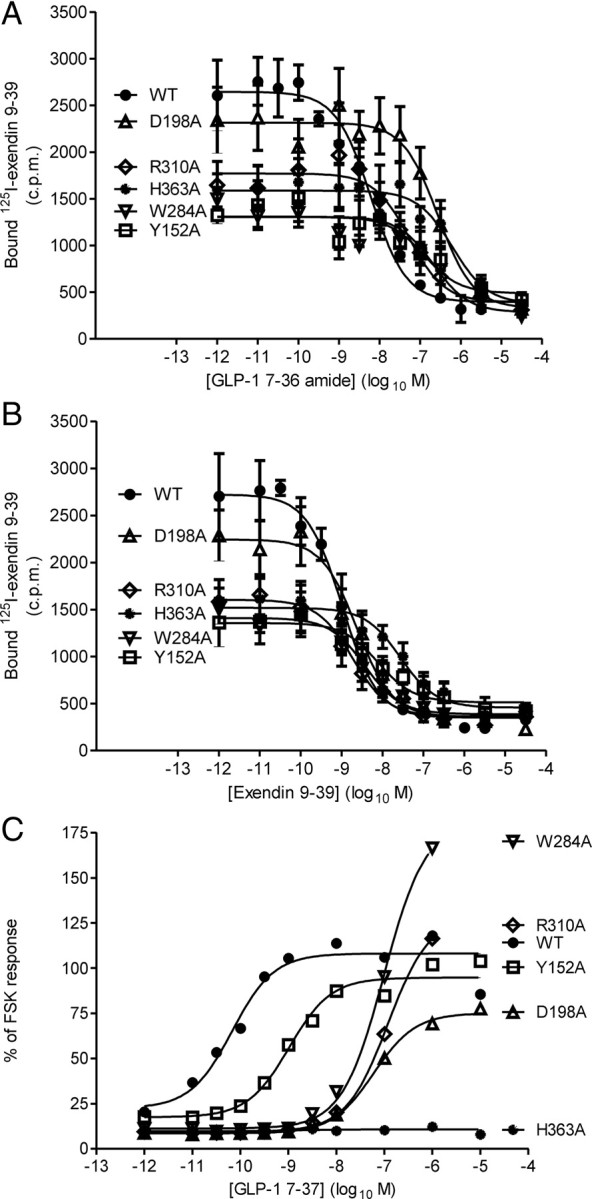Fig. 4.

Ligand binding and cAMP generation by mutated hGLP-1Rs. A and B, Homologous and heterologous competition binding assays were carried out on membranes prepared from HEK-293 cells transiently transfected with the WT and mutated GLP-1Rs using [125I]exendin 9–39. Homologous binding curves were fitted to the exendin 9–39 data and a sigmoidal curve was fitted to the GLP-1 7–36 amide data. Data are expressed as mean ± sem with n = 5 for the WT receptor and n = 3 for each of the mutated receptors. C, Transiently transfected cells were stimulated, in the presence of 1 mm IBMX, for 1 h with varying concentrations of either GLP-1 7–37 or FSK (50 μm) at 37 C. The cAMP was extracted and measured and expressed as a proportion of the response to FSK. Sigmoidal concentration-response curves were fitted. Curves represent the means of n = 7 for the WT receptor and n = 3 for the mutated receptors (error bars omitted for clarity). In each of the panels, data from the WT hGLP-1R and the Y152A (TM1), D198A (TM2), W284A (EC2), R310A (TM5), and H363A (TM6) mutations have been shown to demonstrate the range of alterations observed. The binding affinities for GLP-1 7–36 amide and exendin 9–39 (KI and Kd values, respectively) and receptor expression levels derived from experiments on all receptor constructs are given in Table 2. Similarly, potency estimates and Emax values for cAMP generation derived from experiments on all receptor constructs are given in Table 3.
